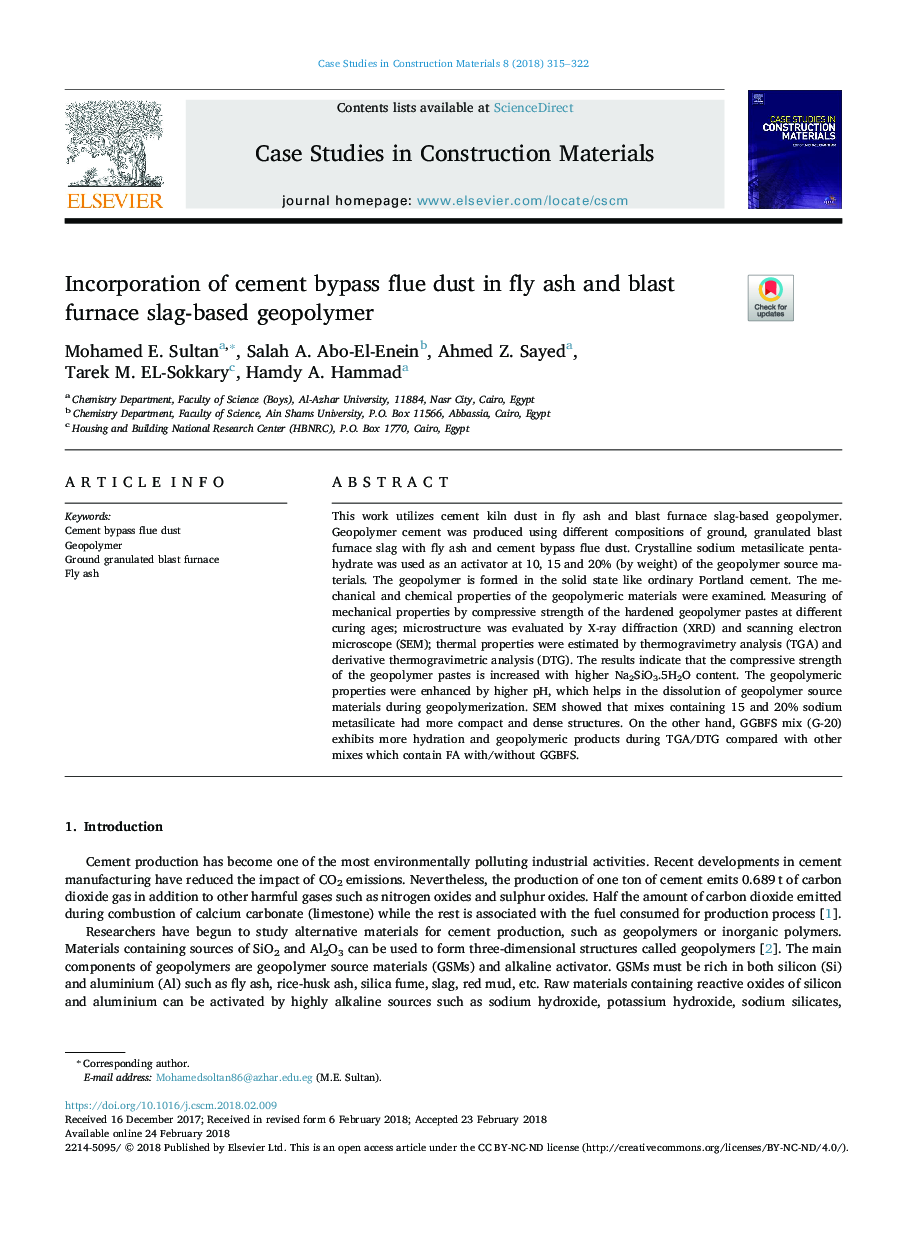| Article ID | Journal | Published Year | Pages | File Type |
|---|---|---|---|---|
| 6701877 | Case Studies in Construction Materials | 2018 | 8 Pages |
Abstract
This work utilizes cement kiln dust in fly ash and blast furnace slag-based geopolymer. Geopolymer cement was produced using different compositions of ground, granulated blast furnace slag with fly ash and cement bypass flue dust. Crystalline sodium metasilicate pentahydrate was used as an activator at 10, 15 and 20% (by weight) of the geopolymer source materials. The geopolymer is formed in the solid state like ordinary Portland cement. The mechanical and chemical properties of the geopolymeric materials were examined. Measuring of mechanical properties by compressive strength of the hardened geopolymer pastes at different curing ages; microstructure was evaluated by X-ray diffraction (XRD) and scanning electron microscope (SEM); thermal properties were estimated by thermogravimetry analysis (TGA) and derivative thermogravimetric analysis (DTG). The results indicate that the compressive strength of the geopolymer pastes is increased with higher Na2SiO3.5H2O content. The geopolymeric properties were enhanced by higher pH, which helps in the dissolution of geopolymer source materials during geopolymerization. SEM showed that mixes containing 15 and 20% sodium metasilicate had more compact and dense structures. On the other hand, GGBFS mix (G-20) exhibits more hydration and geopolymeric products during TGA/DTG compared with other mixes which contain FA with/without GGBFS.
Keywords
Related Topics
Physical Sciences and Engineering
Engineering
Civil and Structural Engineering
Authors
Mohamed E. Sultan, Salah A. Abo-El-Enein, Ahmed Z. Sayed, Tarek M. EL-Sokkary, Hamdy A. Hammad,
